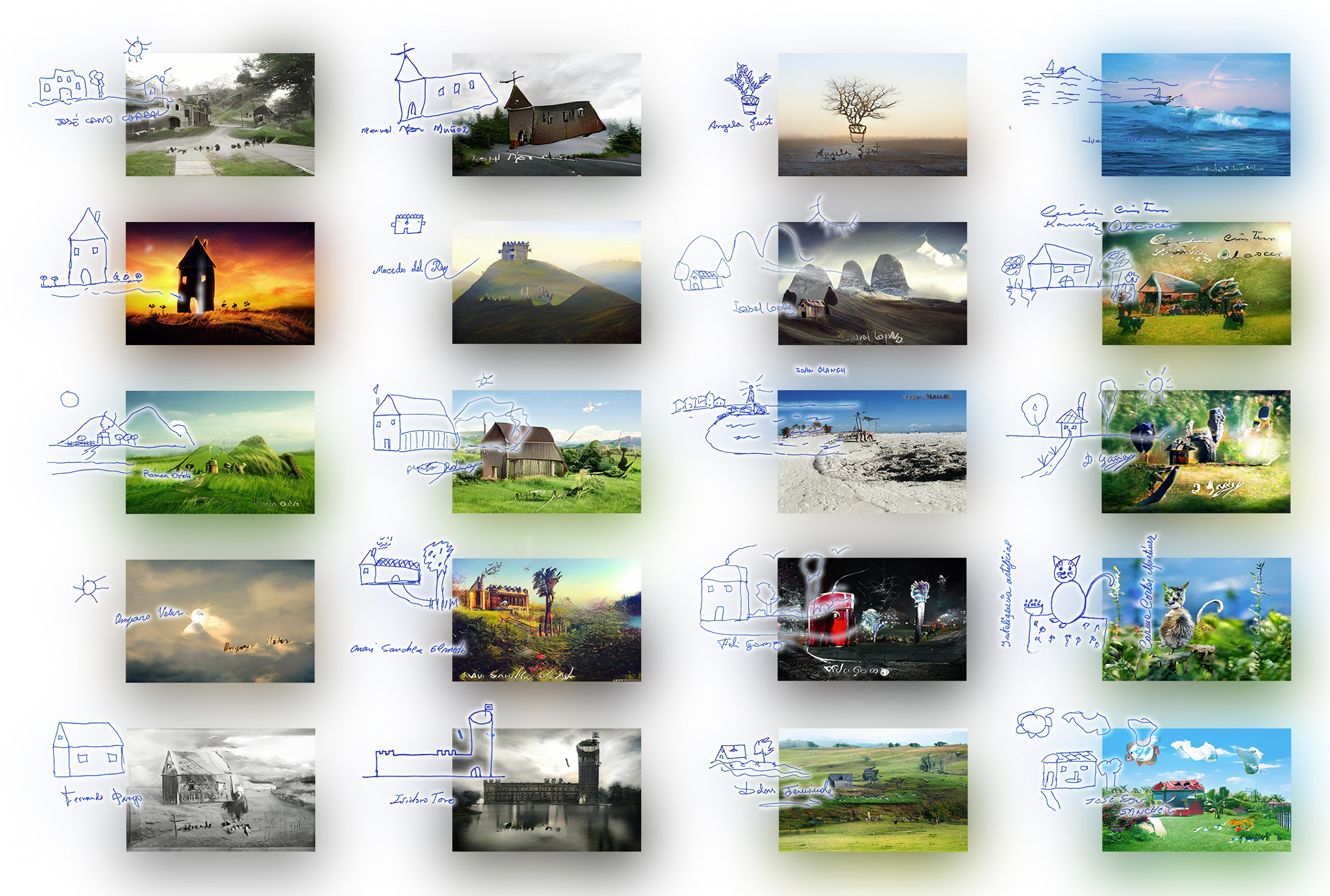
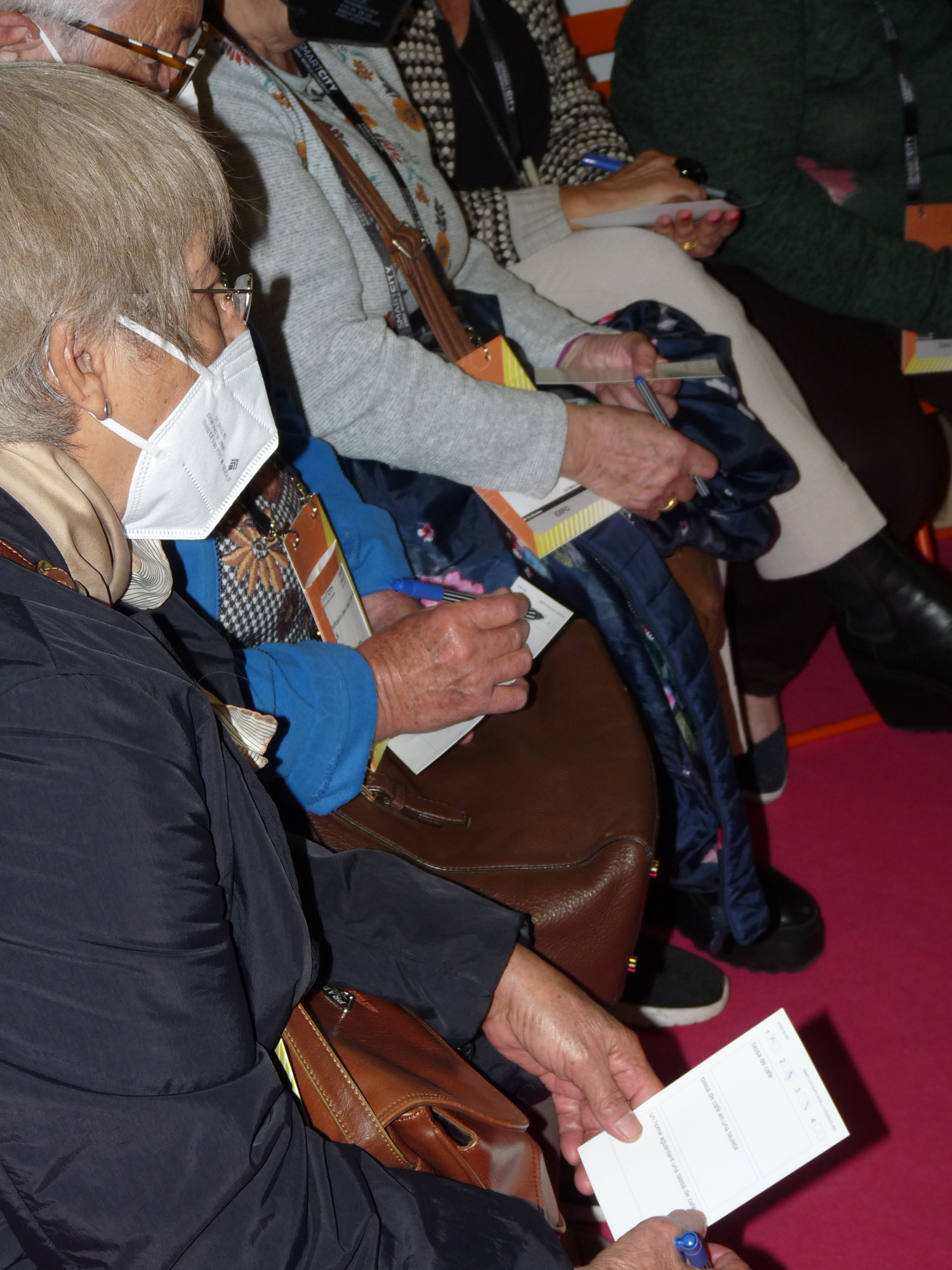
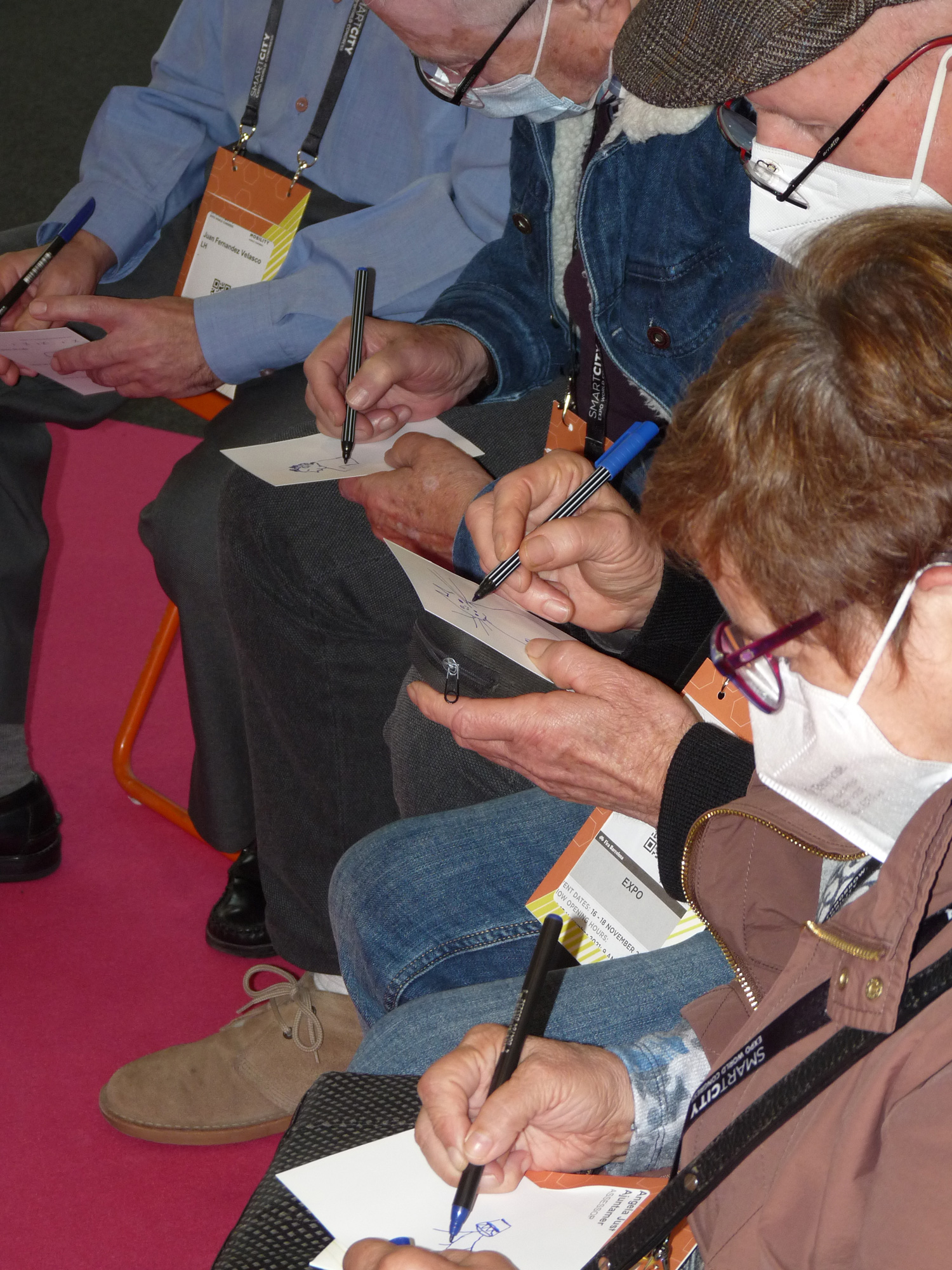
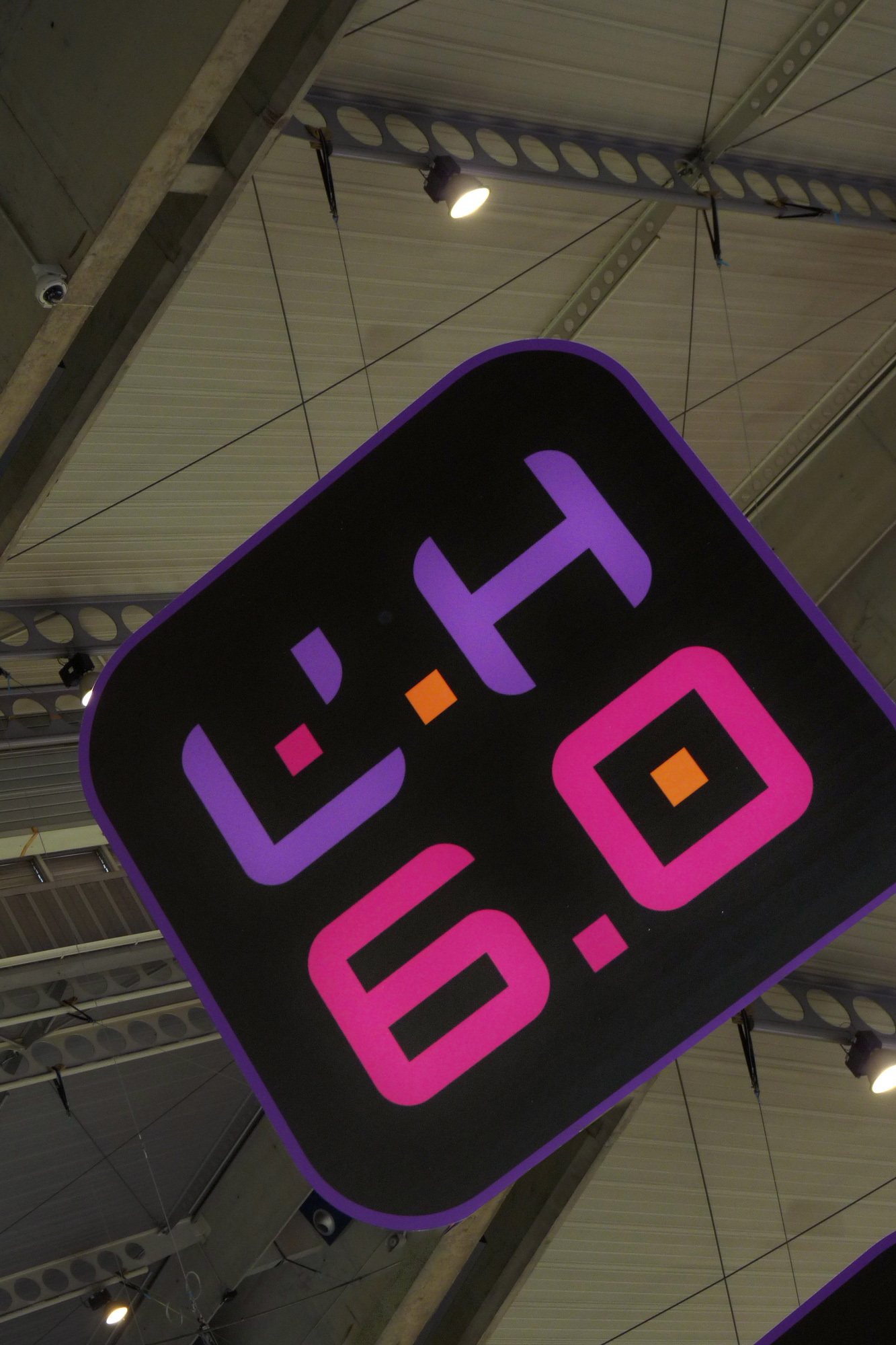
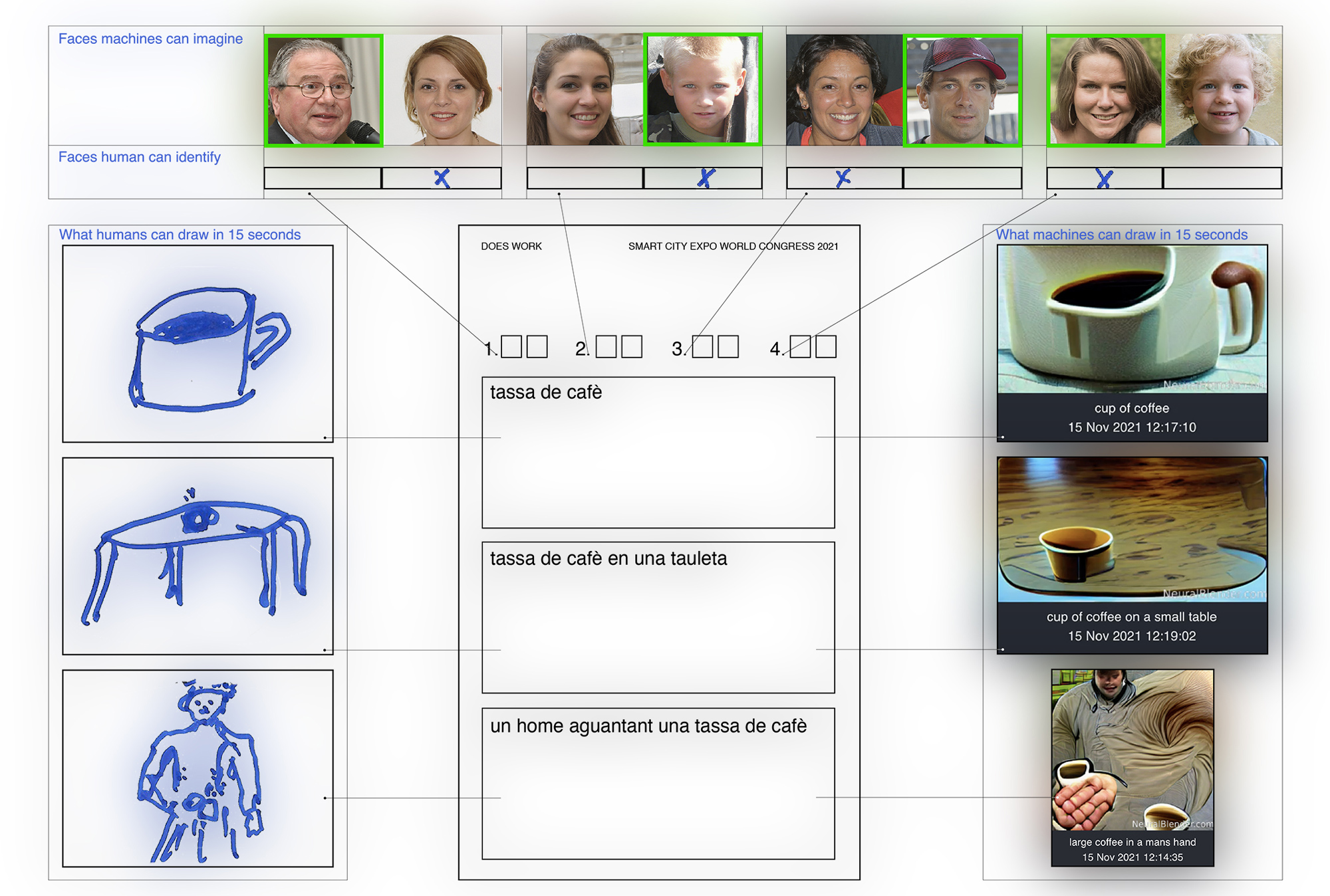
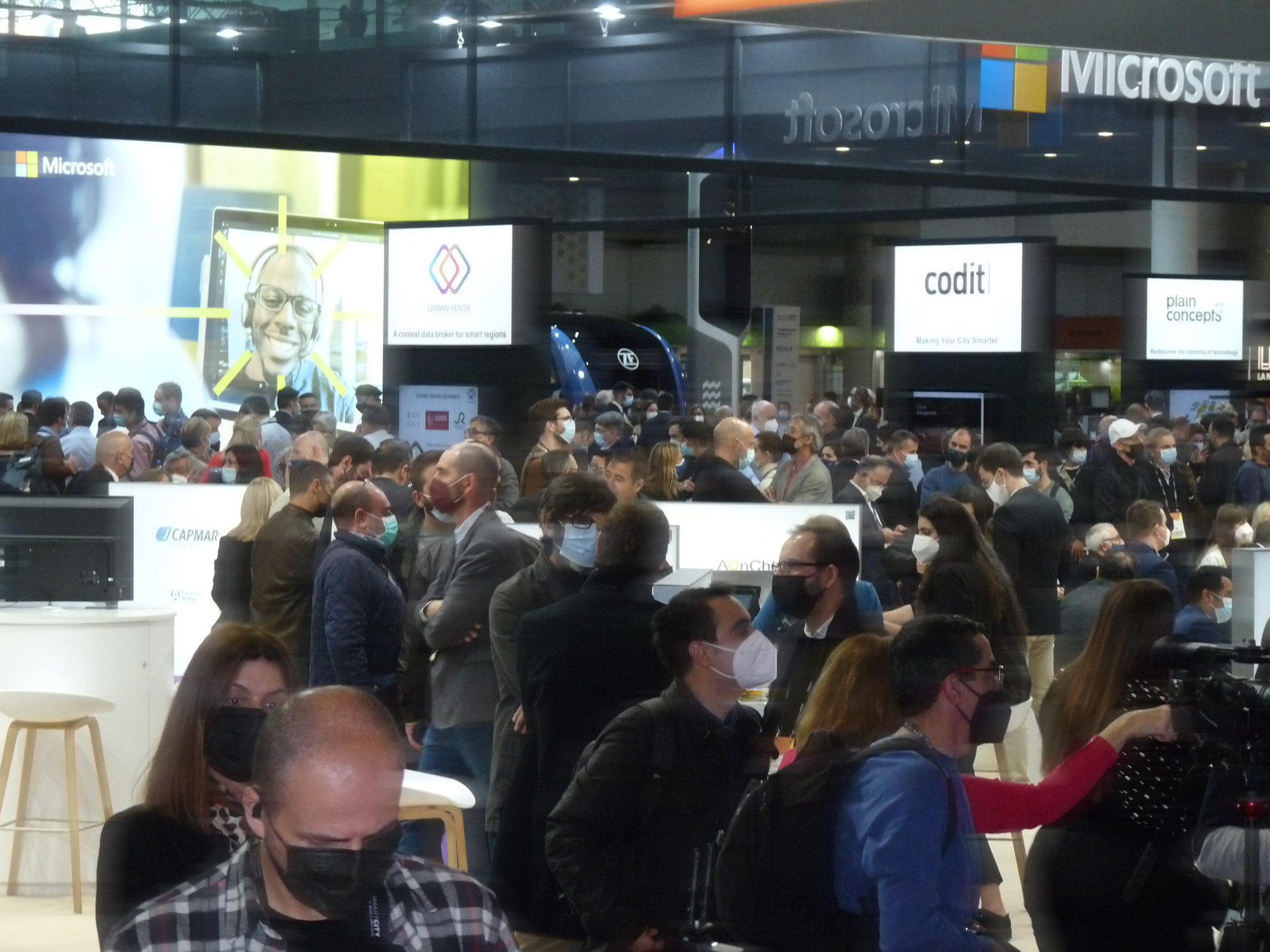
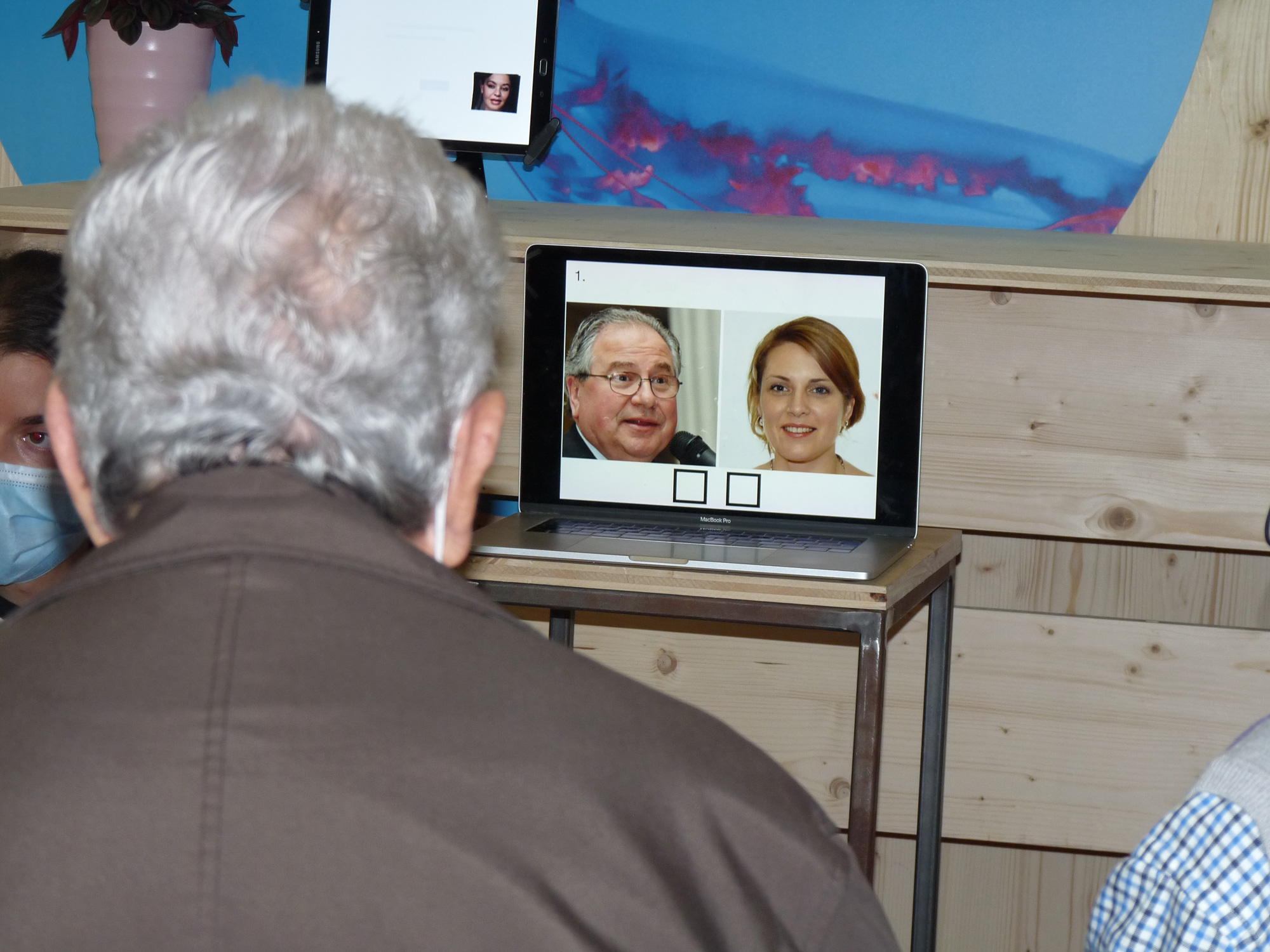
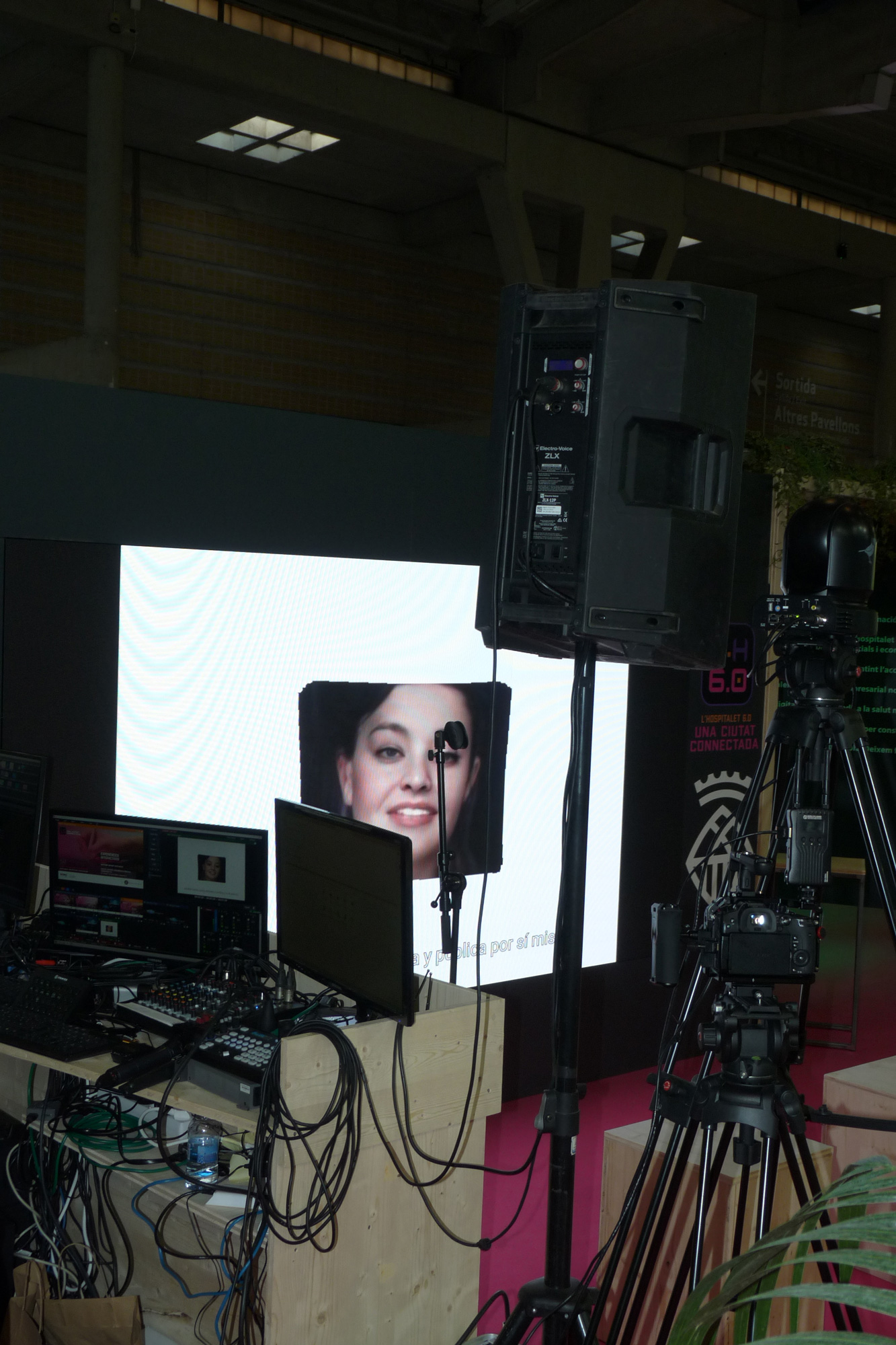
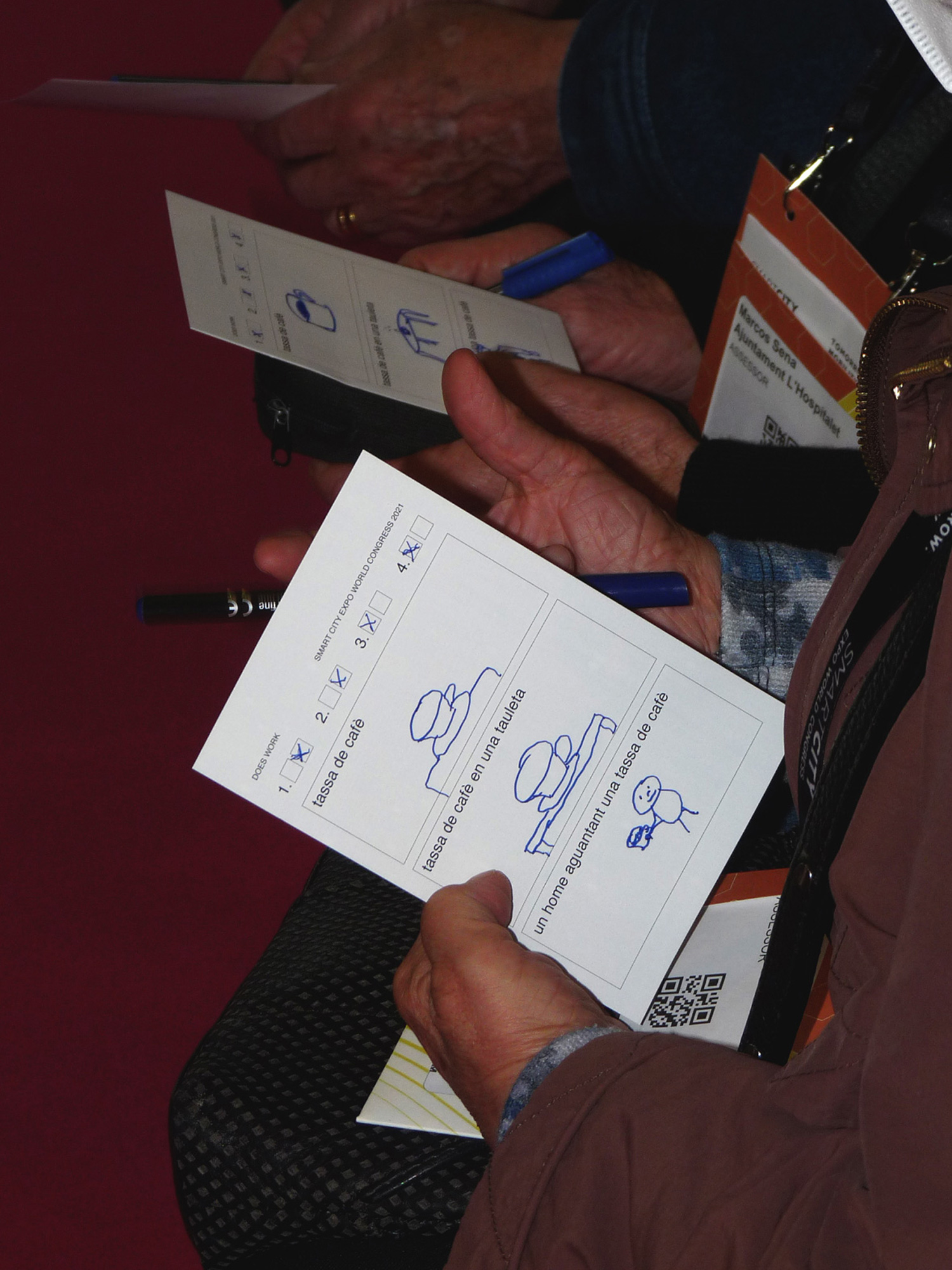
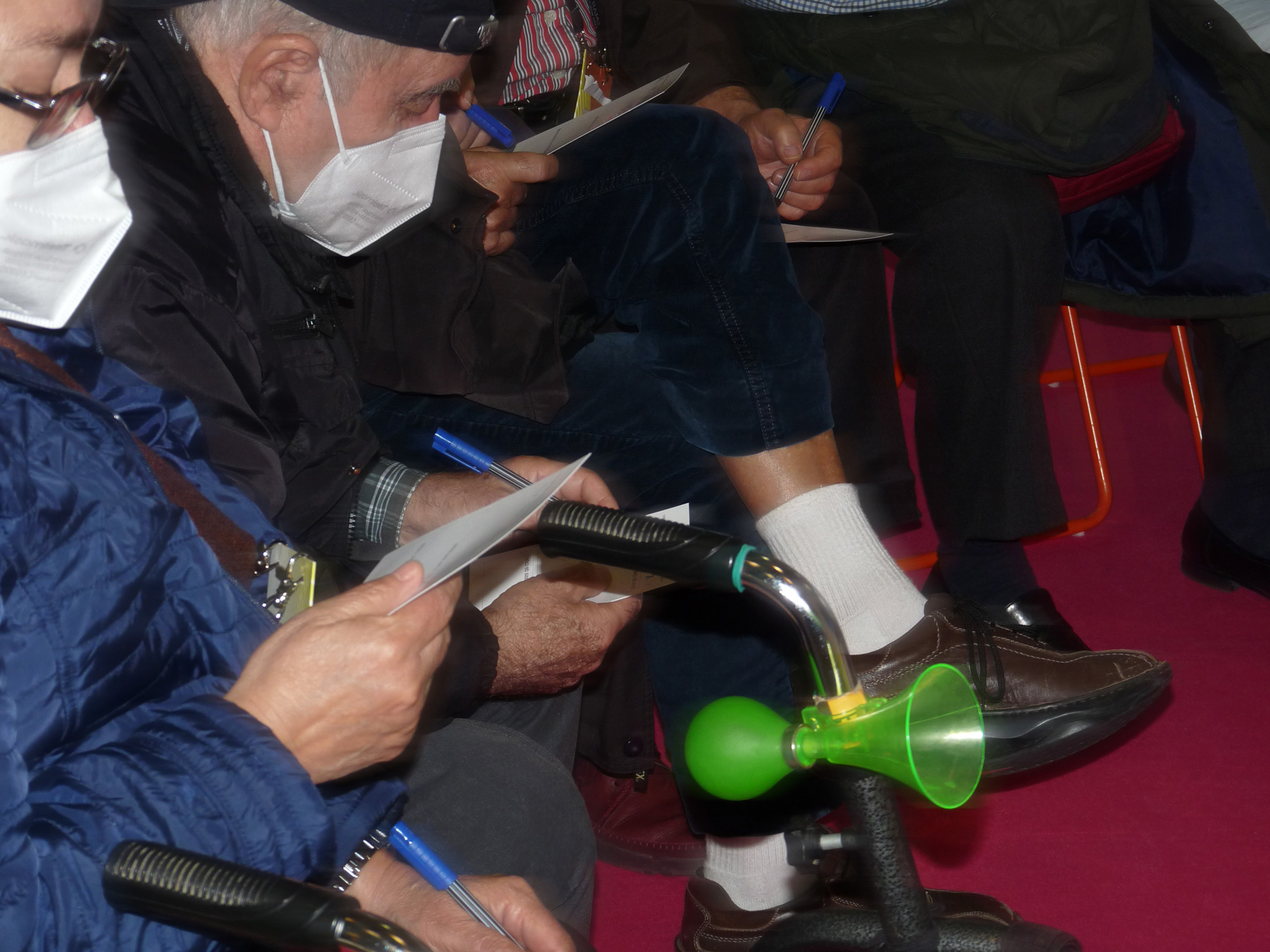
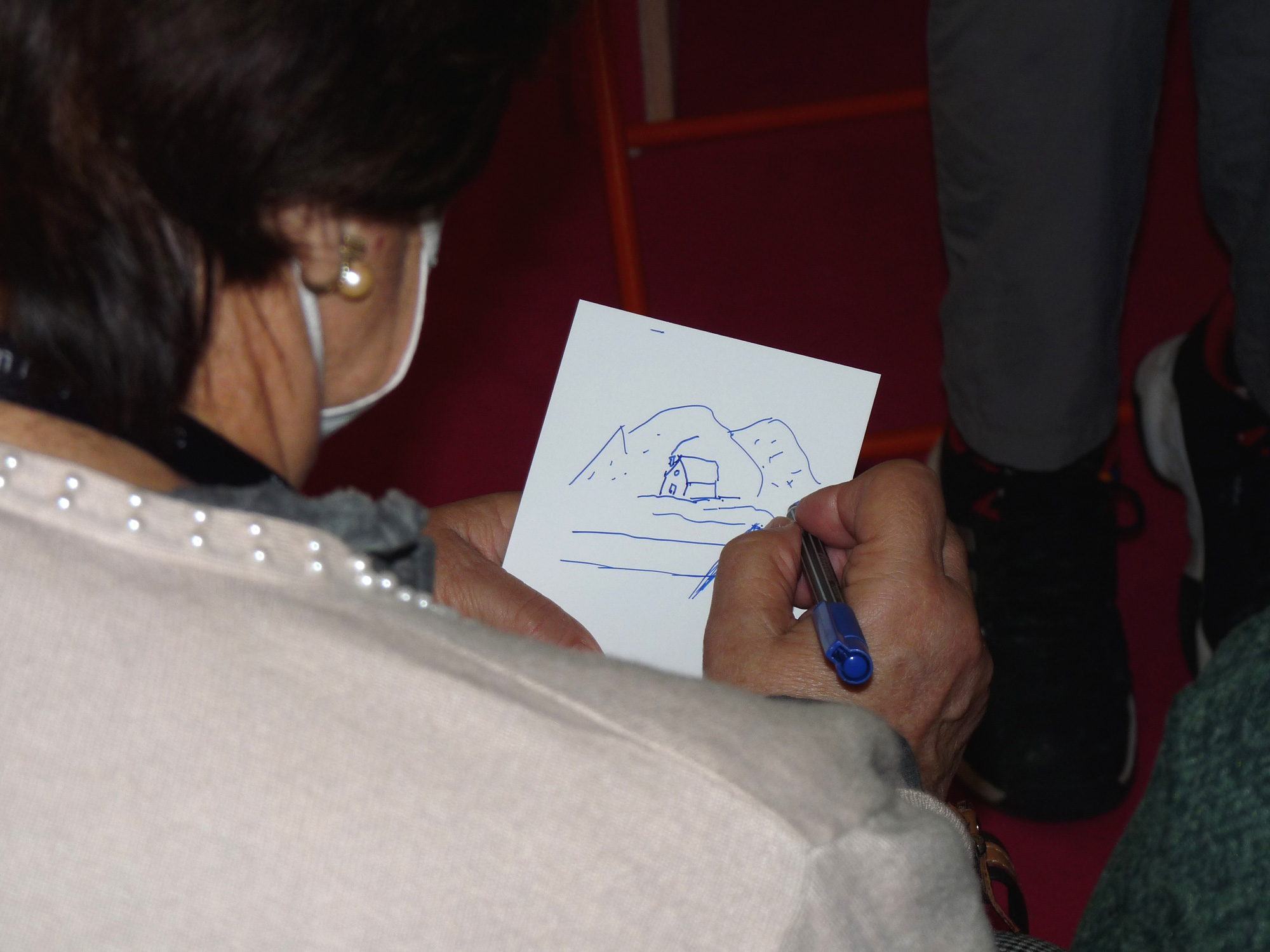
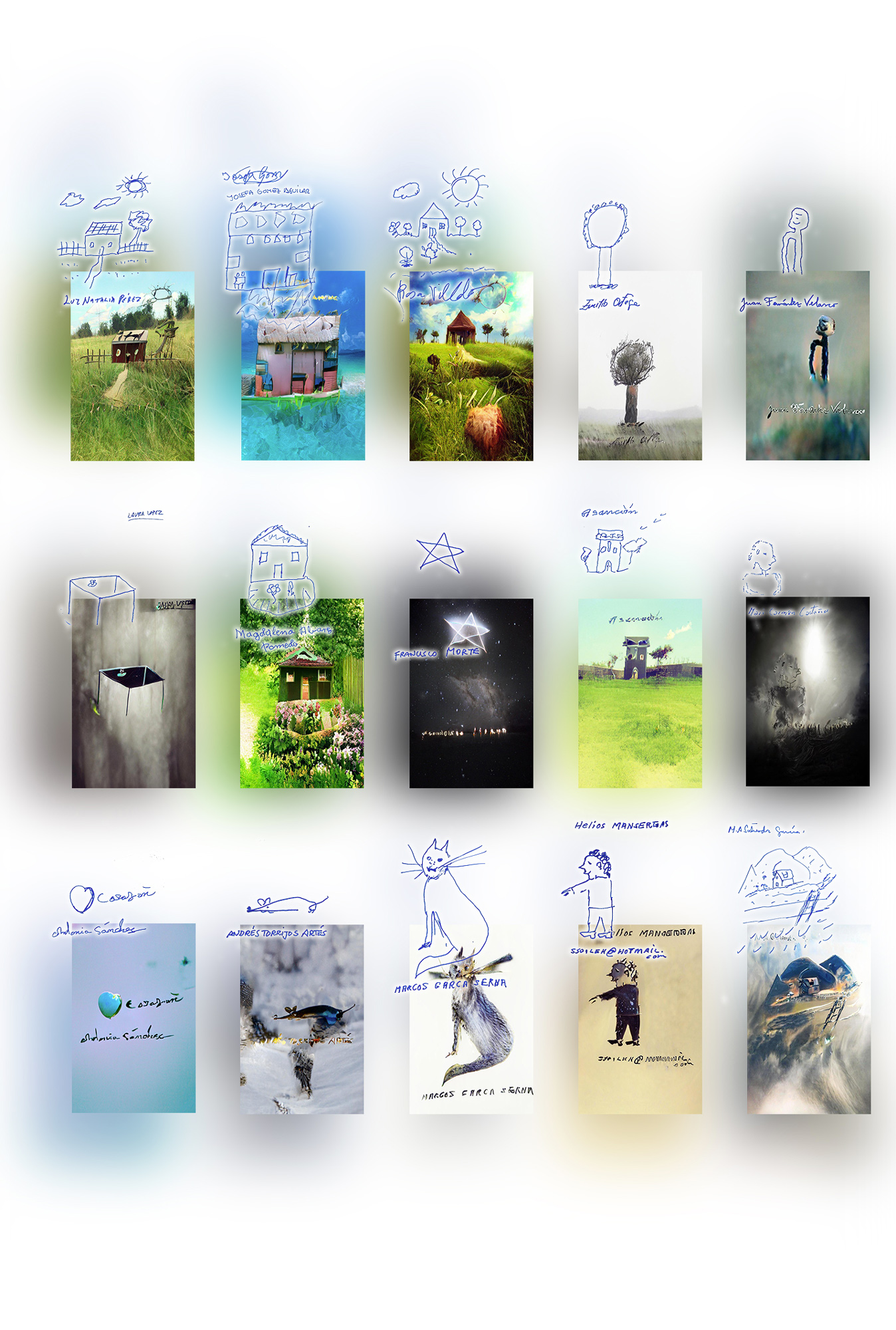
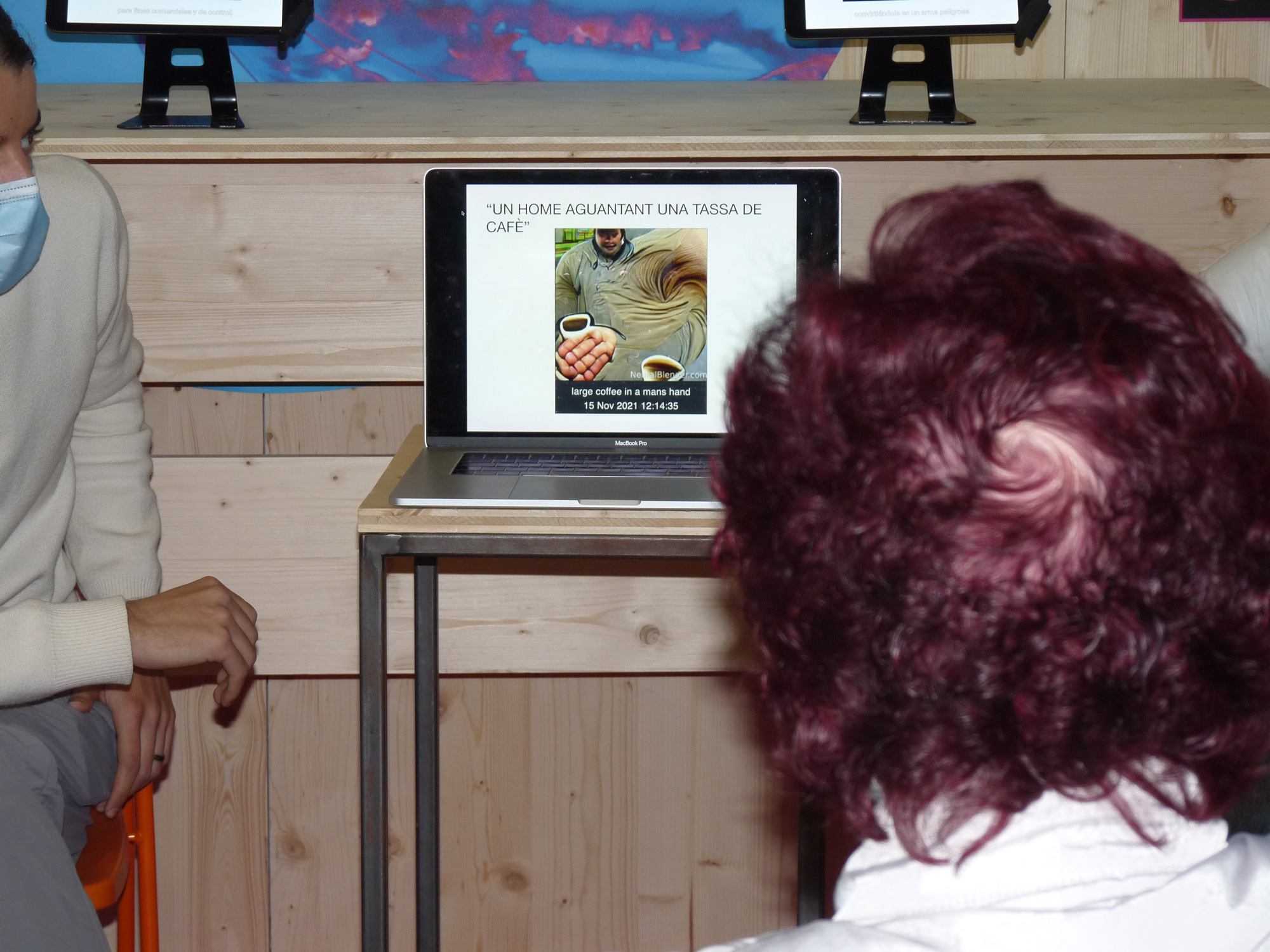
L'H DOES Smart City Expo World Congress
2021
What do elderly individuals know about Artificial Intelligence? What is their relationship with technology and what do they expect from it?
Smart City Expo World Congress 2022 aims to create better futures for cities and their citizens through the use of information and communication technologies (ICTs) while also promoting social innovation: new urban realities, new tech, new business models, and more. For the elderly, basic exhibit entry requirements such as accessibility to an email address can often represent a wall that cuts them off, resulting in their alienation from new realities that are being built. The L'Hospitalet de Llobregat city council organized a stand with simultaneous conferences and workshops where groups of senior citizens were invited and accompanied during the registration process, as they were the main and active targets of the stand. This activity forms part of a series of municipal cultural projects that aim to stimulate and provide resources to the elderly community.
The stand aimed to explain what AI is and why is it legal to use AI to fake someone’s voice, face, or thoughts (and overall identity) to a group that has mostly negative preconceived notions about technology negatively, from assuming that calculators are unnecessary devices that make our brains smaller to grumbling about robotic agents when calling their bank. With everything from spam messages to fake-winner contest advertisements and webcam unhacking tricks and so on, how can we expect them to have a healthy relationship with technology?
The workshop started with a straightforward explanation of AI. Artificial Intelligence is what we call machines that are leaning human capabilities such as reasoning, planning, understanding, and imagining. While being aware it can be used for good or for bad, a basic understanding of AI can provide them with the courage to gain an understanding of it and potentially use it for their own benefit. A simple test was conducted to show the advanced state of this technology and its potential: real faces were compared with machine generated faces, and users were asked to point out which ones they perceived as “real”. The results showed that most users were unable to tell real faces apart from machine generated ones.
Following these discussions, a series of exercises were offered to expose the similarities between human and machine “imagining” capabilities. While we humans are able to imagine a great deal, our capability is based on our experiences and collective memory. We imagine landscapes, houses, cities, faces, and so forth because we have seen many of them before, and we keep them stored in our memories. AI learning is also based on big datasets of media: images, videos, texts, voices, etc. that act as an artificial memory. By training a machine with thousands of images of real trees, it can learn and start guessing how a tree looks. In this exercise, users were asked to draw, in no more than 10 seconds, a “coffee cup”, a “coffee cup on a table”, and a “man holding a coffee cup”. The same phrases and drawing times were then given to an AI tool. The results were not perfect in either case, but extremely relatable somehow. Both humans and machines resorted to their lived/stored images to draw new ones.
Finally, different approaches regarding the relationship between humans and AI were discussed, reaching the conclusion that AI alone is not a substitute, but an interactive tool that can help humans expand our capabilities when imagining and our overall creative processes. From picturing our thoughts to finishing our sentences, dialogue between humans and machines is necessary to understand what sort of information we give machines and what we want them to do with it. The choices are endless. As a final exercise, users were asked to draw whatever they wanted on a postcard that would be later reinterpreted by an AI tool and sent back to them as a Christmas card.
We would like to thank all the elderly for their participation and enthusiasm.
CREDITS
Project developed by DOES for Innovació L'Hospitalet, L'Hospitalet Cultural District and LH 6.0.